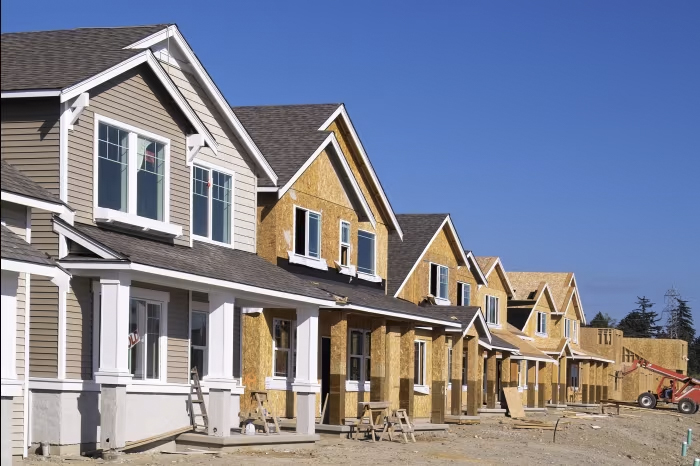Housing starts fell to 1.46 million
The numbers: Construction of new homes fell 4.3% in December, as home builders scaled back new projects.
So-called housing starts fell to a 1.46 million annual pace from 1.53 million in November, the government said Thursday. That’s how many houses would be built over an entire year if construction took place at the same rate every month as it did in December.
Housing starts are down for the first time in four months. New construction recently peaked at 1.8 million in April 2022.
The data exceeded expectations on Wall Street, where the expected rate was 1.43 million. The numbers are seasonally adjusted.
Single-family construction was down in December, while multi-family ticked up.
Even though the December numbers show a drop in new housing units being constructed, in a more recent survey of builders in January, they were more upbeat about future sales of new homes, as mortgage rates fall.
Building permits, a sign of future construction, rose 1.9% to a 1.5 million rate.
Key details: Builders scaled back constructing new single-family homes, leading to an 8.6% drop, but ramped up apartment starts, which rose 7.5%.
Builders only increased construction in the West, where overall housing starts, which includes single-family homes, townhomes and apartments, rose 4.7% in December. Single-family starts rose 0.8%.
Permits for single-family homes rose 1.9% in December. Notably, permits for homes with two to four units, such as townhomes, rose 10.6%.
Big picture: Housing starts reversed course from a big jump in November, dragged down by a drop in new single-family home construction.
Nonetheless, falling mortgage rates are expected to bring back home-buying demand.
Builders are optimistic about being able to sell the homes that they’re starting to build. A persistent lack of resale inventory continues to push buyers towards newly built homes, which could boost new home sales in the coming months, and keep starts elevated.
What are they saying? “The fall on the month was something of a surprise to us given that November’s strength was caused by it being an unseasonably warm and dry month, and last month was the warmest December on record,” Thomas Ryan, property economist at Capital Economics, wrote in a note. “That said, it is consistent with the slowdown in new home sales and build permit issuance in recent months.”
“Looking ahead to this year, we don’t think mortgage rates will fall enough to unwind mortgage rate ‘lock-in’ and cause a meaningful recovery in supply,” he added. “Against that backdrop, demand will continue to get diverted to new builds, which will also encourage stronger construction activity.”
Market reaction: U.S. stocks DJIA SPX were down early Thursday. The yield on the 10-year Treasury note BX:TMUBMUSD10Y was over 4%.
Source: marketwatch.com













